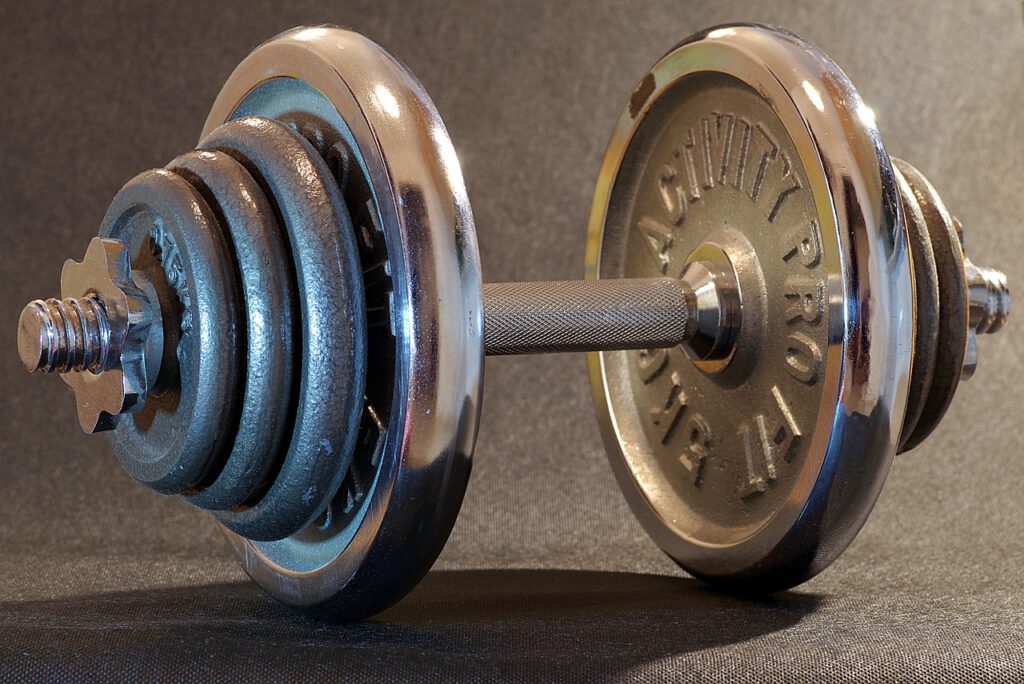
Gynecomastia is a condition that affects the chest of males and can cause a great deal of distress. It involves the growth of breast tissue, often resulting in an enlarged, lumpy chest. While many men are embarrassed by this condition, it’s important to know that there is hope. Do gynecomastia go away? This article will explore what causes gynecomastia and how to treat it so you can get back to feeling confident and comfortable in your own skin.
For many men, gynecomastia can be very embarrassing and emotionally distressing. The thought of having a noticeable lump on their chest may prevent them from going out in public or enjoying physical activities. This can have a major impact on their quality of life and self-esteem.
Fortunately, there is treatment available for those suffering from gynecomastia. With the right medical care, men can reduce the size of their breasts and regain confidence in their appearance. In this article, we’ll discuss the causes of gynecomastia, as well as treatments that could help reduce its size and make it go away for good.
1. What Is Gynecomastia?
Gynecomastia is a condition that affects many men – and it can be both emotionally and physically uncomfortable. In fact, according to the Mayo Clinic, it’s estimated that up to 65% of men have experienced gynecomastia at some point in their life. But what exactly is gynecomastia, and does it go away?
Gynecomastia is an enlargement of breast tissue in males caused by an imbalance between the hormones testosterone and estrogen. It can affect males of any age, but is most common in teenage boys and older men. Men with this condition may experience swelling or tenderness in one or both breasts, which can cause embarrassment, pain, or discomfort.
So does this condition ever go away? The answer depends on the underlying cause. Gynecomastia caused by hormonal imbalances typically resolves itself within a few weeks or months after the hormones balance out again. But if the gynecomastia is caused by certain medications or medical conditions such as liver disease, then it may not go away without treatment.
2. Causes Of Gynecomastia
Gynecomastia is a condition in which men experience an abnormal enlargement of their breast tissue. It can be a source of embarrassment and discomfort for those affected by it, but understanding its causes can go a long way towards finding relief.
Take the case of 45-year-old Bob, who noticed his chest becoming increasingly tender and swollen. He had no idea what was causing these changes until he consulted with his doctor and learned that he was suffering from gynecomastia.
The most common cause of gynecomastia is hormonal imbalance, particularly an elevation in the amount of estrogen relative to testosterone in men. This imbalance can arise due to certain medications, chronic medical conditions such as kidney failure or cirrhosis, or even during puberty as boys’ bodies adjust to the increased production of hormones associated with adulthood. In some cases, the cause may remain unknown but can still be effectively managed with proper care.
No matter what might be causing it, knowing more about gynecomastia could help someone like Bob identify the underlying cause and work towards finding relief. The next step is to explore symptoms of gynecomastia – so let’s dive right into that now!
3. Symptoms Of Gynecomastia
Symptoms of gynecomastia vary from person to person. Most commonly, men experience tenderness and swelling in the breast tissue. The area around the nipples may also become enlarged. In some cases, the nipples may even become darker or more pronounced. This condition is usually not painful, but it can be uncomfortable.
In advanced cases of gynecomastia, excess skin may appear and cause a “sagging” look to the chest. Some people may also experience excess fat deposits on their chests as well as changes in nipple texture or color. These symptoms are generally considered more advanced signs of gynecomastia and should be addressed by a doctor if they occur.
It’s important to note that some men may experience no physical symptoms at all, but still have an imbalance of hormones which can lead to this condition. If you’re unsure whether you have gynecomastia or not, it’s best to talk with your doctor so they can diagnose it correctly and provide an appropriate treatment plan for you.
Now we’ll look at what factors determine whether gynecomastia will go away or not.
4. What Factors Determine Whether Gynecomastia Will Go Away?
Discovering the determinants of whether gynecomastia will go away can be a daunting task. Different factors can impact the resolution of this condition, so it’s important to understand them all. From health habits to hormones, what causes gynecomastia to stay or fade away?
Firstly, lifestyle choices can have an effect on the resolution of gynecomastia. If a person is overweight or obese, losing weight can help reduce the size of enlarged breasts in men. Additionally, avoiding alcohol and drugs such as marijuana and steroids may help diminish symptoms. Furthermore, regular exercise and healthy eating habits can promote positive physical changes and reduce excess fat tissue in the chest area.
Meanwhile, hormone levels are another factor that affect how long gynecomastia lasts. Low testosterone levels and high estrogen levels increase the risk for developing gynecomastia, so these must be balanced in order for it to go away. This is why testosterone therapy may be recommended for some men with persistent signs of this condition. It is also important to note that certain medications used for other conditions may further increase estrogen levels which could contribute to the development or persistence of gynecomastia symptoms over time.
Overall, being aware of possible causes and factors that can impact the resolution of gynecomastia is essential when considering treatment options. Understanding both lifestyle habits and hormone levels are key components in deciding if this condition will go away on its own or require medical intervention.
5. Treatment Options For Gynecomastia
Are you wondering what treatments are available for gynecomastia? This condition, which is an enlargement of the breast tissue in men, can have both physical and emotional effects. In this article, we’ll explore the various treatment options that can help alleviate the symptoms of gynecomastia.
For mild cases of gynecomastia, medication may be prescribed to reduce the size of the chest. These drugs work by blocking hormones that cause breast tissue growth. For more severe cases, surgery may be recommended to remove excess breast tissue. The procedure typically involves liposuction or direct excision of the enlarged tissue.
In some cases, lifestyle changes such as weight loss and exercise may also improve symptoms of gynecomastia. Eating a balanced diet and reducing alcohol consumption can also help reduce symptoms associated with this condition. Additionally, wearing supportive clothing may help alleviate any discomfort caused by enlarged breasts.
There are a range of treatment options available for those suffering from gynecomastia — which one is right for you? With careful consideration and consultation with a doctor, you can make an informed decision about how best to manage your condition and get back to feeling like yourself again.
6. How Long Does It Take For Gynecomastia To Go Away?
Gynecomastia, the enlargement of male breast tissue, is a common condition that can cause embarrassment and discomfort for those affected. But how long does it take for this condition to go away? Many men want to know if there is an answer to this question.
To determine the time frame for gynecomastia resolution, it’s important to understand the underlying causes and treatment options available. Depending on the type of gynecomastia, some cases can resolve in a few weeks while others may take several months or longer.
Fortunately, there are several treatments available that can help reduce the symptoms of gynecomastia and speed up the recovery process. These include lifestyle changes, medication, surgery, or a combination of these methods. The best approach will depend on each man’s unique situation and should be discussed with their doctor before making any decisions.
With the right treatment plan in place, many men have seen improvement in their gynecomastia within a few weeks or months after starting therapy. That said, it is important to be patient and follow your doctor’s advice to ensure you achieve optimal results from your treatment plan.
7. Are There Any Long-Term Effects Of Gynecomastia?
It’s something that almost every man dreads: the dreaded gynecomastia! It can be embarrassing, uncomfortable, and even painful. But did you know that there may be long-term effects from dealing with this condition? Let’s take a closer look at what could happen if you don’t get the help you need to make it go away for good.
The first thing to consider is that some of the treatments for gynecomastia can have long-term side effects. Medications used to reduce the size of enlarged tissue or hormones can cause changes in your metabolism or hormone levels that could last for months or years after treatment. Additionally, surgical procedures used to remove excess fat and glandular tissue can lead to scarring and permanent changes in your chest shape.
It may also be difficult to completely resolve any psychological issues related to having gynecomastia. Despite treatment, many men might still feel embarrassed by their physical appearance and struggle with body image issues. This could lead to depression, anxiety, and even low self-esteem that could last long after the physical symptoms have gone away.
While dealing with gynecomastia isn’t easy, there are a few things you can do to lessen its impact on your life. Seeking medical attention early can help prevent complications and ensure you get the best possible outcome from treatment. Talking with a mental health professional about any feelings of distress or body image issues is also important for helping you cope with your condition in a healthy way.
8. How To Prevent Gynecomastia
According to studies, over 65% of men between the ages of 25 and 44 are affected by gynecomastia. This is an alarming statistic that has led many people to inquire about how to prevent its development. In this section, we will explore some of the ways in which individuals can help to reduce their risk of developing gynecomastia.
One important factor when it comes to preventing gynecomastia is maintaining a healthy weight. Excess fat can cause hormonal changes which can lead to an increase in breast tissue. Therefore, it is important for individuals who are trying to prevent gynecomastia to focus on eating a balanced diet and exercising regularly. Eating plenty of fruits and vegetables, lean proteins, and whole grains will provide necessary nutrients while limiting calorie intake. Additionally, engaging in regular physical activity helps keep the body at a healthy weight and boosts overall health.
In terms of lifestyle choices, avoiding certain drugs and supplements can also help reduce the risk of developing gynecomastia. Anabolic steroids, marijuana, and certain medications have been linked with increased breast tissue growth in men. Therefore, these should be avoided if possible. Furthermore, some dietary supplements may contain ingredients that could increase the risk of developing gynecomastia; therefore it is important to research any supplements before taking them if you are trying to prevent the condition.
By following these guidelines for diet and exercise as well as making smart lifestyle choices, individuals can greatly reduce their risk for developing gynecomastia or help alleviate existing symptoms if they have already developed it. As such, learning about preventive measures for this condition is an important step towards improving overall health and wellness for those affected by it.
9. Diet And Exercise For Gynecomastia
Gynecomastia may be an issue that many men don’t feel comfortable discussing, but it doesn’t have to be. Taking the necessary steps to reduce the appearance of enlarged male breasts doesn’t have to be a daunting task.
Diet and exercise can play a major role in reducing gynecomastia and providing relief from the symptoms associated with it. Eating healthy, balanced meals and engaging in regular physical activity can help reduce fat deposits in the chest area. Additionally, avoiding certain hormones, such as testosterone and estrogen, while supplementing with others like zinc, can also help reduce the effects of gynecomastia.
By making small lifestyle changes and understanding their body better, men can take control of their condition and make strides toward reclaiming their bodies. Understanding one’s body is key when it comes to managing and treating gynecomastia for greater long-term success; this means knowing when it’s time to turn to a medical professional for additional support.
10. When To See A Doctor For Gynecomastia
It is understandable to be reluctant to see a doctor for gynecomastia. After all, it can be embarrassing and nerve-wracking. However, there are times when seeing a doctor is necessary in order to effectively treat the condition. Here are four key points to consider when deciding whether or not to visit a doctor:
1) If you have had gynecomastia for more than two years, it may be time to make an appointment with your doctor. It has been found that after three years without treatment, the condition usually becomes permanent.
2) If you experience any pain or tenderness in your chest area, this could be a sign of infection or other medical issues and should be checked out by a doctor immediately.
3) If the condition is causing severe psychological distress, such as low self-esteem or depression, then visiting a physician is recommended.
4) Finally, if diet and exercise haven’t helped improve the appearance of gynecomastia after several months of trying, then it might be time for professional medical attention.
When making the decision about whether or not to see a doctor for gynecomastia, it is important to weigh these factors carefully and speak with your physician about any concerns you may have regarding treatment options available. Additionally, it is possible that the condition will go away on its own over time so there are no guarantees that medical intervention will resolve the issue. Ultimately, each case must be considered individually and addressing any medical concerns should take priority over cosmetic considerations when evaluating how best to manage gynecomastia.
Frequently Asked Questions
Is Gynecomastia Painful?
It’s ironic, isn’t it? We ask this question – “Is gynecomastia painful?” – as if there weren’t already enough bodily pain for people who suffer from it.
Gynecomastia is a condition in which boys or men develop enlarged breasts due to an imbalance of hormones. This can cause physical and emotional distress, leading to feelings of embarrassment and self-consciousness. While some cases are mild and don’t necessarily require medical intervention, others may be more severe and require surgery to correct the issue.
So, is gynecomastia painful? The answer is yes: both emotionally as well as physically. It can result in tenderness or soreness in the breast area, which can be uncomfortable for those affected. Additionally, it takes a toll on mental health by causing stress, anxiety, and depression. Therefore, it’s important to take steps towards treating or managing the condition in order to reduce its effects on one’s life.
Is Gynecomastia Contagious?
For many men, the worry of gynecomastia can be overwhelming. It’s something that can cause a deep sense of insecurity and raise many questions. Chief amongst these is whether or not it’s contagious – a fear that can hold so many back from seeking help.
The good news is, gynecomastia isn’t contagious in any way; there’s no need to worry about catching it from someone else. But this doesn’t mean it’s not something you should take seriously: it has its own far-reaching implications. Here are three key points to consider:
- Gynecomastia can have psychological effects on those who experience it, causing low self-esteem and depression
- It may increase your risk for certain illnesses if left untreated
- Hormonal imbalances may be an underlying cause, often requiring medical intervention
It’s important to understand the effects of gynecomastia and know when to seek help. If you’re concerned about the condition, talking to a healthcare professional is always advisable – they’ll be able to offer advice and guidance on how best to manage it.
Are There Natural Remedies For Gynecomastia?
When it comes to treating gynecomastia, there are both medical and natural options available. Natural remedies for gynecomastia offer a variety of benefits, including being non-invasive, cost-effective, and with few side effects. Here’s a look at some of the natural remedies for gynecomastia:
- Exercise: Regular exercise can help reduce fat in the chest area, which might improve the appearance of gynecomastia. • Diet: Eating foods that are high in protein and low in unhealthy fats may help reduce excess fat in the chest area. • Supplements: Certain supplements such as fish oil, green tea extract, and zinc may help reduce inflammation which could lead to improvement in symptoms related to gynecomastia. • Herbal Remedies: Certain herbal remedies such as fenugreek or saw palmetto may be helpful in reducing excessive testosterone levels that can cause gynecomastia.
Before trying any natural remedy for gynecomastia, it is important to talk to a doctor about potential risks and benefits involved. While natural remedies may not always work for everyone, they can be an effective way to address symptoms associated with gynecomastia without having to undergo surgery or other invasive treatments.
Are There Any Side Effects Of Treatments For Gynecomastia?
Treating gynecomastia can be an effective way of managing symptoms and restoring the body’s natural balance. But, as with any medical procedure, there are some potential side effects that should be taken into consideration. From hormone therapy to surgery, understanding these potential risks is essential for making an informed decision about the best treatment option.
Hormone therapy has been a popular form of treatment for gynecomastia since its introduction in the 1960s. It works by introducing new hormones into the body to replace those that are out of balance. However, it is important to note that this type of therapy can cause a number of side effects such as acne, headaches, and fatigue.
Surgical treatments for gynecomastia involve removing excess tissue or fat from the chest area via liposuction or excision techniques. While these procedures are generally safe and effective, there are also some risks associated with them. These include infection, bleeding, scarring, and nerve damage. Additionally, patients may experience numbness or pain following surgery which could last anywhere from several weeks to months after the procedure.
No matter what type of treatment is chosen for gynecomastia, it is important that patients understand all the potential risks involved before making a decision. While there is no guarantee that one method will work better than another in terms of reducing symptoms and restoring balance in the body, being aware of any possible side effects beforehand can help ensure successful results and reduce complications down the line.
Is Gynecomastia Common In Adolescents?
Gynecomastia is a condition where the breast tissue enlarges in boys or men, and it is surprisingly common during adolescence. In fact, according to recent studies, up to 65% of teenage boys can experience gynecomastia at some point in their teenage years. But what causes this condition?
Typically, gynecomastia is caused by an imbalance of hormones like estrogen and testosterone in the body. Many teenagers experience fluctuations in hormone levels as they go through puberty, which can lead to the development of gynecomastia. However, other factors like certain medications and health conditions can also be responsible for causing gynecomastia.
Fortunately, there are many treatments available for gynecomastia that range from conservative options such as diet and lifestyle modifications to more aggressive treatments like surgery. Most cases of gynecomastia resolve on their own within several months without any treatment, but if symptoms persist then it’s important to speak with a doctor about potential treatment options.
TIP: Try not to worry too much if your teenager develops gynecomastia – it is very common during adolescence and there are many treatments available that can help ease any discomfort or embarrassment associated with this condition.
Conclusion
Gynecomastia can be a tough condition to live with, but it is important to remember that there are treatments available if you want to reduce the size of your breasts. Some people find natural remedies to be an effective way of treating gynecomastia, while others may opt for more invasive treatments. It’s important to consider the potential side effects of any treatment before deciding which one is right for you.
Ultimately, whether or not gynecomastia will go away on its own depends on the individual and the underlying cause. Many cases of adolescent gynecomastia resolve without any need for treatment, though some may require medical intervention. It’s imperative to reach out to a healthcare professional who can provide guidance when determining how best to proceed.
No matter what route you take, it’s important that you take care of yourself and your mental health along the way. Gynecomastia can be uncomfortable and embarrassing, but with proper care and understanding, it doesn’t have to define who you are or stop you from living your life.



